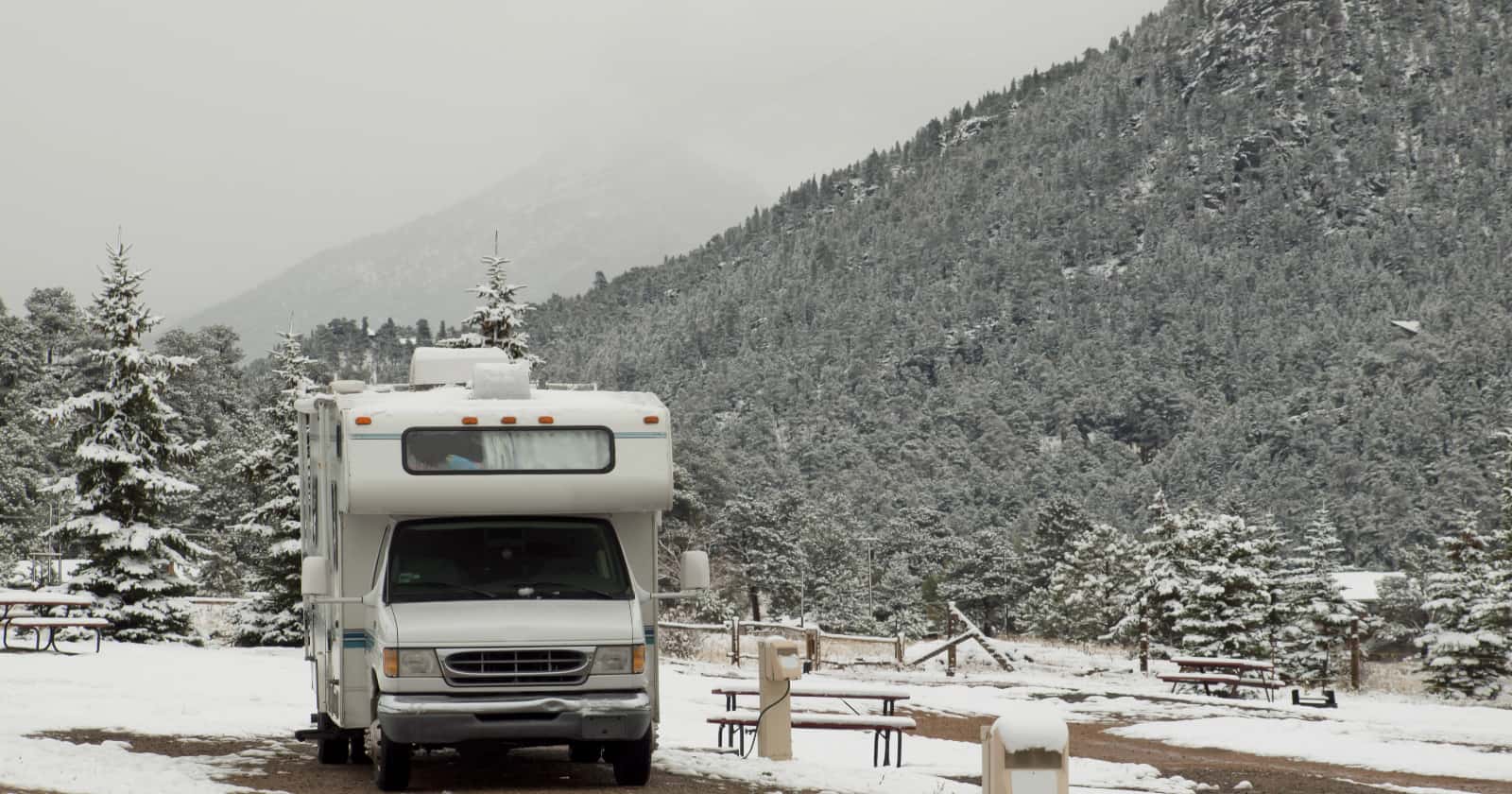Yes, You Can Stay Warm in an RV, Even During Winter
Winter RV camping is not just possible; it’s enjoyable with the right preparations. The serenity of camping grounds during autumn and winter, plus modern amenities, make it a prime time for RV adventures. You’ll find that with the right setup, staying warm in your RV isn’t all that difficult. Here are ways to ensure warmth and comfort in your RV during colder months.
Understanding Your RV’s Seasonal Design
RVs are designed with specific weather conditions in mind. Before embarking on winter camping, check your RV’s seasonal rating. Three-season RVs, for instance, might not include features like holding tank heaters or extra insulation, essential for colder climates.
The term “Four Season RV” varies in meaning across manufacturers. Don’t just take their word for it; ensure the RV has the following key features for winter camping:
- Wall and ceiling insulation with an R-value of 7 or higher
- Insulated and heated Pex pipes
- Enclosed and heated underbelly
- A propane or diesel ducted furnace
- Dual pane windows
Transforming Your RV Into a Winter-Ready Haven
Regardless of your RV’s seasonal rating, these tips will help you create a warm refuge from the chilly weather.
1. Insulate RV Windows and Slideouts
Insulating your RV windows is vital in retaining heat. Materials like Reflectix or bubble wrap, available at most DIY stores and online, can be cut to fit your windows for added thermal protection.
- Measure Your Windows and Slideouts: Begin by accurately measuring the windows and slideouts of your RV. This will help determine how much insulating material you’ll need.
- Select Insulation Material: Choose materials like Reflectix or bubble wrap, which are readily available at most DIY stores or online. These materials are effective in retaining heat and are easy to work with.
- Cutting the Material: Using your measurements, cut the insulation material to size. Make sure the cuts are precise for a snug fit, which is crucial for effective insulation.
- Application: Carefully apply the cut pieces to the windows and slideouts. For materials like Reflectix, you might need to use adhesive tapes or Velcro strips to secure them in place. Ensure there are no gaps or loose ends.
- Check for Air Leaks: After installation, check around the windows and slideouts for any air leaks. Sealing these leaks is essential for maintaining optimal insulation.
- Maintenance: Regularly inspect the insulation for any wear and tear and replace it as needed. This will ensure that your RV remains well-insulated against the cold throughout the winter months.
2. Install RV Skirting
RV skirting can significantly improve heat retention and protect your RV plumbing from freezing. There are several skirting options, ranging from foam insulation boards and Reflectix to more sophisticated solutions like Air Skirts and custom vinyl skirting.
- Foam insulation board: A cost-effective option.
- Reflectix: Affordable and more effective when combined with foam boards.
- Air Skirts: Highly effective but more expensive.
- Custom vinyl skirting: Durable and aesthetically pleasing, though pricier.
3. Insulate Pipes and Holding Tanks
Insulating your RV’s pipes and holding tanks is crucial to prevent freezing and potential damage. RV holding tank heating pads and pipe heaters are effective solutions and worth considering for winter camping.
4. Place a Light Under Your RV
The concept of placing a light under your RV to prevent plumbing from freezing is a simple yet effective method, especially in emergency situations or when other heating solutions are not available. Here’s an explanation of how this works:
The Basic Principle
- Heat Generation: Incandescent light bulbs generate heat as a byproduct of light production. Unlike LED or fluorescent bulbs, which are designed to be energy-efficient, incandescent bulbs convert a significant portion of the electrical energy they use into heat.
- Radiant Heat: The heat generated by an incandescent bulb is radiant heat, meaning it warms the immediate area around the bulb. When placed under the RV, this heat can help to raise the temperature of the underbelly area where plumbing is often located.
Application in RVs
- Placement: The light bulb is placed under the RV, ideally in a protected area to avoid direct exposure to wind and moisture. This is often done in conjunction with RV skirting, which helps to enclose the heat and prevent it from dissipating too quickly.
- Effect on Plumbing: The warmth from the bulb helps to keep the temperature around the pipes above freezing, reducing the risk of the water inside them freezing and causing damage.
- Safety Considerations: It’s important to ensure that the light bulb is securely placed in a safe location where it won’t come into contact with flammable materials. Additionally, it should be sheltered from any contact with water or snow.
Limitations and Considerations
- Temporary Solution: This method is best viewed as a temporary or emergency solution. It may not be sufficient in extremely cold temperatures or for extended periods of time.
- Power Consumption: Incandescent bulbs consume more power than modern lighting solutions, so this should be factored into your overall energy usage, especially in an RV.
- Safety First: Given the fire hazard associated with high temperatures and potential bulb breakage, this method should be used with caution and constant monitoring.
In summary, placing a light under your RV can be a way to add a bit of warmth to your underbelly plumbing during cold nights. However, it’s important to use this method responsibly and as a supplement to, rather than a replacement for, more robust winterizing techniques. Always prioritize safety and consider more sustainable and effective long-term solutions for RV winter living.
5. Utilize Area Rugs
Area rugs are not just comfortable underfoot; they add an extra layer of insulation to your RV’s floor, helping to keep the cold at bay.
6. Exercise Caution with Space Heaters
Space heaters are a convenient way to add extra warmth to your RV during cold months, but they must be used with caution to avoid fire risks and electrical system overload. Here are essential considerations for using space heaters safely in your RV:
Understanding RV Electrical Capacity
- 50-Amp RVs: These typically can handle up to 12,000 watts (12 kilowatts) of electricity. However, it’s prudent to use much less than this maximum to avoid tripping breakers or causing damage.
- 30-Amp RVs: These are more common and can handle up to 3,600 watts (3.6 kilowatts). It’s important to manage the total wattage you’re using at any given time.
Calculating Total Wattage
- To prevent overloading your RV’s electrical system, add up the wattage of all appliances in use, including space heaters. For example, if you’re using a 750-watt space heater, also consider the wattage of other devices like lights, the refrigerator, and electronics.
- Always leave a buffer below your RV’s maximum capacity to accommodate sudden surges or additional small appliance usage.
Want to Learn More about RV Electricity? Click Here
Choosing the Right Space Heater
- Wattage: For a 30-amp RV, it’s advisable to choose a space heater of 750 watts or less. For 50-amp RVs, you can opt for higher wattage, but always keep the total wattage in check.
- Safety Features: Look for space heaters with essential safety features:
- Overheating Protection: Automatically shuts off the heater if it gets too hot.
- Tip-Over Protection: Turns off the heater if it’s knocked over, which is particularly important in the confined spaces of an RV.
- Cool-to-the-Touch Exterior: To prevent burns, especially if you have children or pets.
- Thermostat Control: For maintaining a consistent temperature without manual adjustment.
Safe Usage Practices
- Distance from Flammables: Keep the heater at least three feet away from flammable materials like curtains, bedding, or furniture.
- Avoid Confined Spaces: Don’t use space heaters in very confined spaces, such as small bedrooms, where heat can build up quickly.
- Never Leave Unattended: Never leave a space heater running unattended or while sleeping. It’s safer to add extra blankets to your bed than to rely on a space heater overnight.
Additional Tips
- Ventilation: Ensure your RV is adequately ventilated when using a space heater to avoid condensation buildup, which can lead to mold.
- Regular Inspections: Regularly inspect your space heater for any damage or wear, and replace it if necessary.
By following these guidelines, you can safely use space heaters in your RV, ensuring a warm and safe environment during the colder months. Remember, safety is paramount when it comes to adding supplemental heat sources to your living space.
Take Advantage of Being Mobile
Finally, remember the greatest advantage of RV living: mobility. If the cold becomes too much, you always have the option to drive to a warmer destination and enjoy a more temperate climate. To assist in finding the ideal spot for your winter getaway, consider using the RV LIFE Campgrounds. This resource offers detailed reviews and information on campgrounds, helping you choose the best location for your winter RV adventures, whether you’re seeking milder weather or a scenic winter wonderland.
Conclusion: Embracing Winter Adventures in Your RV
In summary, winter RV camping can be a delightful experience with the right preparations. From understanding your RV’s seasonal capabilities to implementing practical measures like insulating windows, skirting, and pipes, you can transform your RV into a warm and inviting space, even in the coldest months. Remember, the flexibility of RV living offers you the freedom to chase the sun or embrace the winter wonderland. Utilizing resources like RV LIFE Campgrounds can aid in planning your perfect winter escape. So, gear up your RV and get ready to enjoy the unique tranquility and beauty that winter camping has to offer. Safe travels and warm stays!




